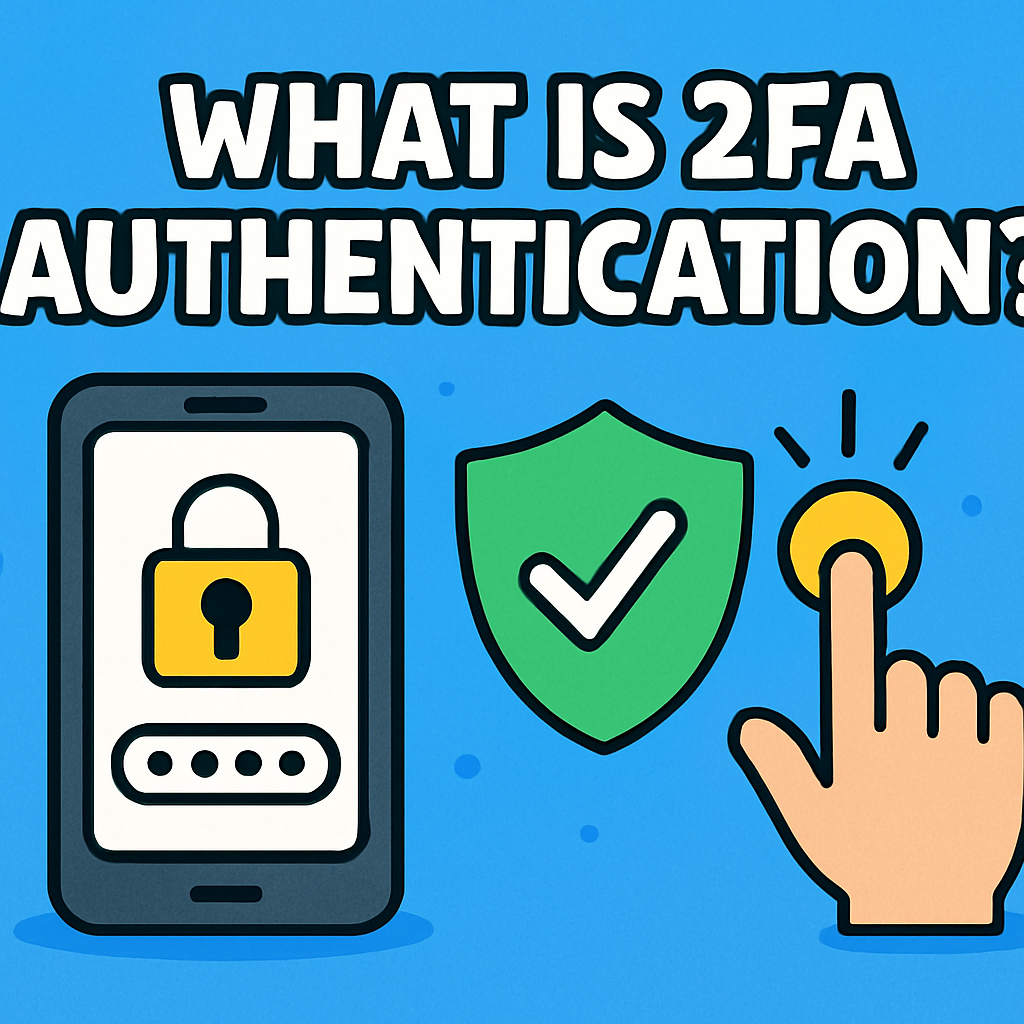Updated on September 24, 2025, by OpenEDR
Cybercrime is skyrocketing, with 80% of breaches linked to stolen or weak passwords. This raises a critical question for IT leaders and executives: what is 2FA authentication, and how can it help protect businesses against modern cyberattacks?
2FA (Two-Factor Authentication) is a security process that requires users to provide two different forms of verification before accessing an account or system. It goes beyond the traditional username and password, adding an extra layer of protection.
For IT managers, CEOs, and cybersecurity professionals, adopting 2FA is one of the simplest yet most effective ways to strengthen security and reduce risk.
What Is 2FA Authentication?
Two-Factor Authentication (2FA) is a method of verifying a user’s identity using two distinct factors:
Something you know – like a password or PIN.
Something you have – such as a phone, token, or smart card.
(Optional, in advanced systems: Something you are – biometrics like fingerprints or facial recognition.)
👉 In short: 2FA makes it significantly harder for cybercriminals to access systems, even if they steal a password.
How Does 2FA Authentication Work?
When users attempt to log in, the system asks for:
Primary Credential – Username and password.
Secondary Factor – One-time code (OTP), push notification, or biometric scan.
If both factors match, access is granted. Otherwise, the login attempt is blocked.
Example: When an employee logs into a business email, they may enter their password and then confirm their identity with a 6-digit code sent to their smartphone.
Why 2FA Is Critical for Businesses
Understanding what is 2FA authentication is only half the story. The real value lies in its ability to prevent costly cyberattacks.
Stops Account Takeovers: Prevents unauthorized logins, even with stolen credentials.
Compliance Support: Meets standards like GDPR, HIPAA, and PCI DSS.
Protects Remote Workforces: Secures access for employees outside the office.
Builds Customer Trust: Demonstrates commitment to protecting sensitive data.
Reduces Financial Risk: A breach can cost millions—2FA is a low-cost safeguard.
👉 According to Microsoft, 2FA blocks 99.9% of automated account attacks.
Types of 2FA Authentication
Not all 2FA methods are the same. Here are the most common types:
1. SMS-Based Authentication
Sends a one-time passcode (OTP) via text message.
Simple but vulnerable to SIM-swapping attacks.
2. App-Based Authentication
Uses apps like Google Authenticator or Authy to generate time-based codes.
More secure than SMS.
3. Push Notifications
Sends an approval request directly to a mobile device.
Convenient and user-friendly.
4. Hardware Tokens
Physical devices like YubiKeys generate authentication codes.
Highly secure but harder to scale.
5. Biometric Authentication
Uses fingerprints, voice recognition, or facial scans.
Secure but requires compatible devices.
2FA vs MFA: What’s the Difference?
Many people confuse 2FA with MFA (Multi-Factor Authentication).
| Feature | 2FA | MFA |
|---|---|---|
| Number of Factors | Exactly two | Two or more |
| Complexity | Moderate | Higher |
| Use Case | Business accounts, logins | High-security environments |
👉 Verdict: 2FA is a type of MFA. MFA can include 2FA but also adds extra verification layers.
Advantages of 2FA Authentication
✅ Stronger protection than passwords alone.
✅ Reduces phishing and credential-stuffing risks.
✅ Increases user confidence in security.
✅ Simple and affordable for businesses.
✅ Meets compliance standards.
Drawbacks of 2FA Authentication
While powerful, 2FA is not perfect:
User Inconvenience: Some employees resist extra steps.
SMS Vulnerabilities: Text-based codes can be intercepted.
Hardware Costs: Tokens may be expensive for large organizations.
Bypass Risks: Advanced phishing attacks can still trick users.
👉 Solution: Combine 2FA with Zero Trust security and EDR (Endpoint Detection & Response) for complete protection.
Business Use Cases for 2FA
When answering what is 2FA authentication, it’s useful to see how businesses apply it:
Corporate Email Protection – Stops phishing-driven account takeovers.
VPN Access – Ensures remote employees connect securely.
Customer Accounts – Protects sensitive financial or personal data.
Cloud Services – Secures access to SaaS platforms like Office 365 or Salesforce.
Critical Infrastructure – Guards against insider threats in healthcare, finance, and energy.
Best Practices for Implementing 2FA
For maximum effectiveness, IT leaders should:
✅ Use app-based or hardware tokens over SMS.
✅ Combine 2FA with EDR and firewalls.
✅ Train employees on phishing risks.
✅ Regularly test and update authentication policies.
✅ Monitor login attempts for suspicious activity.
Why 2FA Alone Isn’t Enough
While 2FA greatly improves security, it doesn’t stop all attacks. Hackers can still exploit:
Endpoint vulnerabilities
Insider threats
Social engineering
That’s why organizations need a layered security strategy, combining:
Firewalls
Zero Trust frameworks
Endpoint Detection & Response (EDR)
👉 EDR solutions detect unusual behavior on endpoints, complementing 2FA by catching threats that bypass authentication.
FAQs: What Is 2FA Authentication?
1. Is 2FA the same as MFA?
No. 2FA uses two factors, while MFA can use two or more.
2. Can 2FA be hacked?
Yes, but it’s far harder. Advanced phishing or SIM-swapping attacks may bypass it, which is why layering defenses is critical.
3. Is SMS 2FA safe?
It’s better than nothing, but app-based or hardware token methods are more secure.
4. Do all businesses need 2FA?
Yes. From small startups to enterprises, 2FA helps protect sensitive accounts.
5. Does 2FA slow down users?
Slightly, but the added protection far outweighs the inconvenience.
Conclusion: 2FA as a Cybersecurity Essential
So, what is 2FA authentication? It’s a two-step verification process that protects accounts and systems by requiring more than just a password. For IT managers, CEOs, and cybersecurity leaders, 2FA is a must-have defense against phishing, credential theft, and account takeovers.
But remember—2FA is only one part of the puzzle. The strongest protection comes from combining 2FA with EDR, Zero Trust, and layered defenses to stop modern cyber threats.
👉 Take action today: Register for OpenEDR Free
